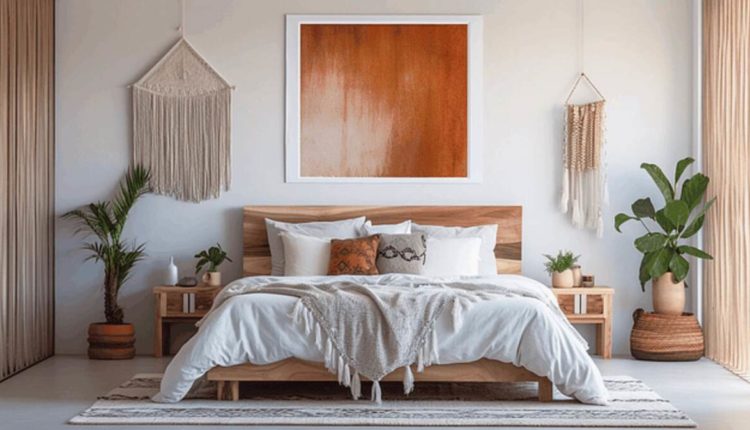Although minimalist principles are most typically linked with current and up-to-date aesthetics, they can also be applied to more classic and timeless styles. This interior design approach emphasizes using various textures to create a comforting ambiance. Wood, for instance, can be used extensively in a design to develop a sense of coziness and equilibrium. In addition, the use of monochromatic color schemes is essential to the minimalist aesthetic. You’ll find white, gray, and earth shades in this category. Materials come in a broad spectrum of colors and textures and can be used to enhance any room’s aesthetic. The Amazing fact about Interior Design.
Selecting high-quality, multipurpose furniture and decorative pieces is essential for pulling off the minimalist aesthetic. Keep the number of ornaments to a minimum and focus on quality over quantity while decorating your home. Wall art and vases are great examples of simple accents that can add much visual interest to a room. For instance, a piece of geometric wall art might look great with some contemporary furniture.
Remember that natural light is essential to the minimalist aesthetic, so make sure the space’s number of windows and doors is manageable. Instead, choose an airy color scheme and unfussy window drapes or blinds. In addition, you should utilize clever storage solutions that permit a clean and uniform appearance and strive to eliminate clutter. Handleless cabinet doors, minimalist light fixtures, and spare furnishings are all examples.
If you’re going for a minimalist look, which emphasizes simplification, you shouldn’t show off anything but your most valued assets. This is a fantastic opportunity to make a statement about who you are, but don’t go crazy. The more stuff you have lying around, the more disorganized and unwelcoming your home will feel. Similarly, too much art can be distracting and ruin the look of a room.
Plants are a great way to bring the outdoors inside, so feel free to incorporate them into your minimalist house. Natural-fiber rugs, wooden furniture, and pottery can also get the outside inside. Colorful accents can be added to a minimalist space using natural-toned paint, carpets, and furnishings.
Adapting your living space to the minimalist aesthetic is a challenge that can pay off in the long run. First, remove anything unnecessary, such as old decorations or furniture, and then pick and choose what stays. Remember how the items will look together in color, shape, and size when selecting. If you follow these guidelines, you can make your home a minimalistic haven of beauty and tranquility.
Minimalism is famous for a good reason; it’s a simple approach to giving your home a sleek, clean look. The purpose of minimalist design is to eliminate unnecessary elements to create a tranquil and elegant environment. I’ll review the foundations of minimalism and teach you how to implement them in your home. Although minimalist principles are commonly associated with current and contemporary aesthetics, they can also be applied to more traditional and timeless designs.
This interior design technique stresses using varied textures to create a soothing ambiance. For example, wood can be used widely to generate a sense of comfort and balance. Monochromatic color schemes are essential to the minimalist aesthetic. Shades of white, gray, and earth can be found in this group. Fabrics come in various colors and textures and can be utilized to improve the look of any room.
Choosing high-quality, versatile furniture and decorative elements is critical for achieving a minimalist look. When decorating your home, keep the ornaments minimal and prioritize quality over quantity. Vases and wall art are two examples of effortless accents that can bring a lot of visual interest to a room. Geometric wall art, for example, would look excellent with some modern furniture. Remember that natural light is crucial to minimalist design, so include the number of windows and doors. Choose a light color palette and simple drapes or coverings for the windows.
Furthermore, it would be best if you used intelligent storage solutions that allow for a clean and uniform appearance and attempt to reduce clutter. Examples are cabinet doors with no handles, minimalist light fixtures, and sparse furnishings. If you want a minimalist impression that stresses minimalism, you should only show off your most valuable assets. This is an excellent opportunity to express yourself but stay moderate. The more clutter you have, the more unorganized and unwelcoming your home will appear.
Similarly, too much art can be distracting and detract from the overall appearance of a place. Plants are an excellent way to bring nature within, so feel free to incorporate them into your minimalist home. Natural-fiber carpets, wood furniture, and pottery are all ways to get the outside in.
Natural-toned paint, carpeting, and furnishings can provide colorful highlights to a minimalist home. Creating a minimalist style in your living space is a challenge that might pay off in the long term. Get rid of everything unnecessary, such as old decorations or furniture, and choose what to keep. Consider how the pieces look together in color, shape, and size while selecting. Following these recommendations can create a minimalistic haven of beauty and peace in your house.
Read Also: The expense of Using a Contractor to Watertight Your Basement
